The Oort cloud: Astronomy’s Most Captivating Supposition
By: Elisabeth Bauman, Dawn Deguire, Taralyn Donohue, Gurleen Lehal, Jacey Nyberg, Brianna Stene, and Phillip Zinck
Humans have always been fascinated with outer space. One fascination has been the topic of the Oort cloud. The Oort cloud is theorized to be a large region of icy debris, thought to be thousands of AU across, that surrounds our solar system.1 While numerous objects in our solar system have been known for many millennia, the theories of the Oort cloud and discoveries of Dwarf Planets are relatively recent and still shrouded in mystery. The Oort cloud has been one of the most interesting theories in astronomical science. Since the first discovery by a Dutch astronomer by the name of Dr. Jan Oort in the 1950s, the properties of the Oort cloud have been a topic of intriguing discussion.2 This makes it particularly interesting to answer the questions of what exactly is the Oort cloud, what lies within it, and how can we verify its existence?
The answer(s) to this question is particularly important in modern astronomy because it involves actual evidence of discoveries such as dwarf planets and comets. So far, the most accepted way to support the theory of the Oort cloud is by using advanced and modern technology to first find objects within the Oort cloud, rather than defining the cloud itself. Furthermore, concrete evidence of the Oort cloud can help astronomers in determining the origin of planet formation from protoplanetary disk processes as they have been theorized to be connected.1 Therefore, the Oort cloud is a theoretical body of matter that is believed to hold within it a historical record of the origins of our solar system. While the Oort cloud is still largely hypothetical, the science and origin of dwarf planets and long-range comets supports the theory of the Oort cloud.
Overview of Research
- The Oort cloud
- What is it?
- How was it formed?
- The First Theorist: Jan Oort
- Evidence that may suggest the theory of the Oort cloud
- Long-period comets
- Planet formation and protoplanetary disks
- Dwarf planets
- Recent Developments
- Conclusion
The Oort Cloud
What is it?

Figure 1: Diagram of the Oort cloud. https://space-facts.com/oort-cloud/
The Oort cloud is theorized to be a collection of icy objects, also known as planetesimals, that are within a region far beyond our planetary solar system. The icy objects of the Oort cloud surrounding our solar system lie beyond the Kuiper belt.3 Thus, the Oort cloud is theorized to “extend outward almost halfway to the nearest stars.”4 That is, at its furthest point, 100 000 AU from the Sun.
The Oort cloud is theorized to have up to 10 trillion (1012 ) objects residing in it, and has been referred to as “the frontier of the solar system.”5, 6 Additionally, it fits with observations of comets in our solar system.1 Astronomers believe many long-period comets, objects that originate from distances greater than 50,000 AU from the sun, and dwarf planets, also known as trans-neptunian objects, could also originate in the Oort cloud. However, to date, there has not been enough correlation between a proposed theory and observational data to prove the existence of the Oort cloud.1
How was it formed?
Currently, there is a single most promising idea for the formation of the Oort cloud. It states that after the planets formed 4.6 billion years ago, there were many planetesimals left over, near these newly formed planets. A planetesimal is the leftover chunks, composed of the same material the planets were made of. These chunks then became scattered throughout the solar system; some left the solar system completely, due to the gravity of the larger planets, such as Jupiter. The chunks that remained in the solar system were held in an eccentric orbit around the sun. A combination of the sun’s gravitational pull and the galaxy caused these chunks to collect on the edge of our solar system, where other planets could no longer perturb them, thus explaining the formation of the Oort cloud.
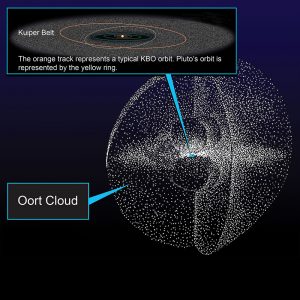
Figure 2: The Oort cloud relative to the Kuiper Belt. The Kuiper belt is a region of icy bodies beyond the orbit of Neptune https://solarsystem.nasa.gov/resources/491/oort-cloud/?category=solar-system_oort-cloud
Another theory suggests that, early in the life of our solar system, a large planet was thrown from its orbit around the Sun. In its journey to the edges of our solar system, it brought objects from the Kuiper Belt into orbit around itself into the inner Oort cloud.4 It is not known if this large planet is still present deep within the Oort cloud (though this would support the theories of Dr. Scott Sheppard from the Carnegie Institution for Science in Washington, D. C. who says a large planet in the Oort cloud would explain the orbitals of dwarf planets), or if this hypothetical planet has left our solar system altogether.
The First Theorist: Jan Oort

Figure 3: Dr. Jan Oort. https://www.aip.org/history-programs/niels-bohr-library/oral-histories/4806
Dr. Jan Hendrik Oort was a Dutch astronomer born in Franeker, Netherlands, on April 29, 1900, and lived till the age of 92. When Dr. Oort was 17, he was admitted to the University of Groningen to study physics. After Oort’s time at the University of Groningen, Dr. Oort accepted a position at the Leiden University Observatory, where he was eventually offered a position as a Professor. However, he ended up leaving his teaching position during the German occupation of the Netherlands in 1942. After the war in 1945, he returned to the university, where he became the director of the observatory until 1970.7 During this time, Dr. Oort observed the night sky and was particularly interested in comets. In 1950 he developed a theory about the origins of comets from the Oort cloud. Some of Oort’s other notable works include Galactic Halo discovery, calculating the distance between the earth and the center of the milky way, the first evidence of Dark Matter, and the polarization of light from the Crab Nebula.8 Because of these great discoveries, Dr. Jan Oort is considered to be one of the most important and influential astronomers of the 20th century.
Dr. Jan Oort studied comets and wondered about their origins; he theorized that the solar system was surrounded by a vast, spherical cloud consisting of comets and other stellar debris. However, this cloud was not visible due to the immense distances involved, and its location at the edge of the solar system. The cloud was thought to have a radius up to 100,000 AU or 1.5 light-years.9 This spherical cloud of icy objects including comets that revolve around the sun at extremely long distances is known as the Oort cloud. The Oort cloud is an astronomical region in space that is often referred to as a shell surrounding our solar system.1 Dr. Oort hypothesized that new comets are objects orbiting the sun near the edge of its gravitational zone whose orbits have been disturbed by nearby stars. Eventually, these comets travel close enough to the sun that they can be viewed. An example of this occurrence is Halley’s Comet, which almost certainly originated from the Oort cloud, but now resides as a member of the Kuiper Belt. Dr. Jan Oort’s theories about the Oort cloud have been widely accepted by the scientific community. Without his theory, scientists may not have had any idea of where comets and other celestial objects come from, as it is impossible to observe the Oort cloud physically.
Evidence that may suggest the theory of the Oort cloud
By definition, the Oort cloud is a theoretical, spherical cloud of predominantly icy planetesimals that is believed to surround the sun at a distance of up to around 100,000 AU (1.5 ly). This places it in interstellar space, beyond the Sun’s Heliosphere where it defines the cosmological boundary between the solar system and the region of the sun’s gravitational dominance.10 Since the definition of phenomenon is an observable fact or event, the Oort cloud is not an astronomical phenomenon as it has never been observed. Astronomers can only study what they believe are the results of the Oort cloud, or objects that originate within the Oort cloud.
These discoveries include evidence of long-period comets, the existence of dwarf planets, and theories of planet formation from protoplanetary disks of the Oort cloud. However, exploring the Oort cloud presents numerous difficulties, most of which arise from the fact that it is incredibly distant from Earth. By the time a robotic probe could actually reach it and begin exploring the area in earnest, centuries will have passed here on Earth. Not only would those who had sent the probe out in the first place be long dead, but humanity will have most likely invented far more sophisticated probes or even manned craft in the meantime.10
Long-period comets

Figure 4: Example of a long period comet. http://astronomy.swin.edu.au/cosmos/L/Long-period+Comets
Kuiper belt objects (KPOs) are similar to comets and are rich in water ice. Unlike the Oort cloud, whose objects are at too great a distance to be observed, thousands of KPOs have been observed in the last 25 years. Therefore, the study of long-period comets is crucial to understanding what the Oort cloud contains.
For example, a 2019 study of all known long-period comets (647) has provided evidence that the gravitational pull of stars can influence a comet’s motion when coming within 1000 AU from it. This phenomenon, known as a stellar perturbation, is found to be a rare phenomenon. In addition to closeness in proximity, other specific conditions must be met including the star having a small velocity (the speed at which an object moves).11
The study only found two instances where perturbations had occurred, concluding that it is rare for a star approaching our solar system to meet all the conditions necessary to significantly perturb the observable long-period comets. Unfortunately, due to having access to inconsistent data on the motion of stars and comets, testing the reliability of the research approach is not possible. However, the study is the first ever confirmation of the Oort cloud hypothesis that uses real stars rather than a simulation.

Figure 5: Protoplanetary disk enclosing the star, HD 163296. https://astrobiology.nasa.gov/news/planets-still-forming-detected-in-a-protoplanetary-disk/
Planet formation and protoplanetary disks
The connection between Exo-Oort clouds and planet formation has been a theory suggested by many. It is well known and supported by the findings of the Hubble Space Telescope that planets formed from the same collision of the nebula that formed the Sun. When this nebula collided it turned into a protoplanetary disk containing dust, ice and gas. These particles then formed to create planetesimals, which further led to the formation of planets.12
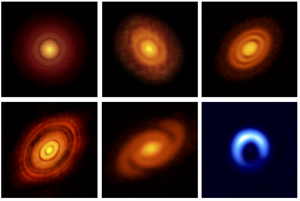
Figure 6: Possible planet formation from a protoplanetary disk. https://astrobites.org/2018/08/23/filling-dust-gaps-in-our-knowledge-of-planet-formation/
The Oort cloud is largely made up of similar planetesimals that created our universe. Thus, the suggestion that planets can be formed within the protoplanetary disks within the Oort cloud could be a topic greatly supported. However, this still requires significant evidence of planet formation within the range of the Oort cloud. Such evidence can include the possible existence of dwarf planets like Sedna.
Dwarf Planets
While the Oort cloud has remained largely hypothetical due to the challenge of actually observing objects within its borders, within the past twenty years the discovery of dwarf planets beyond the Kuiper Belt have reinforced the belief of its existence. The definition of a dwarf planet differentiates it from a planet on two criteria: unlike the dwarf planet, a planet has cleared the neighborhood around its orbit, and the definition of a planet does not include the satellite distinction.13
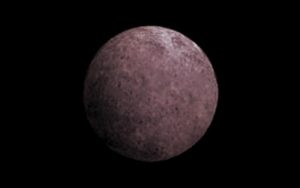
Figure 7: Sedna, the dwarf planet. https://phys.org/news/2015-09-dwarf-planet-or10.html
In 2004 the first object beyond the Kuiper Belt was identified as a small, planet-like object. The object was believed to be a small dwarf planet, named Sedna.4 Sedna’s orbit brings it 76 AU away from our Sun.4 In order to qualify as a dwarf planet, a body must have enough mass to assume a rounded shape and may not be a satellite of another body. While the plotted orbit of Sedna indicates it is not a moon, the planet’s shape is unclear. Nonetheless, numerical simulations modelling the formation of an Oort cloud suggest that Sedna’s orbit may belong within the Oort cloud’s parameters.14 Sedna is extremely far from the sun, almost twice as far as Pluto. Due to its remoteness, it is believed that Sedna was not an object of much geological activity and has very few craters.
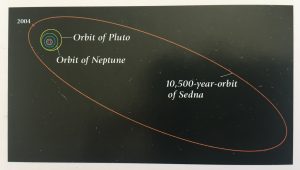
Figure 8: The Orbit of Sedna. Image from book: T. Dickinson, The Universe and Beyond, 4th ed. (Firefly Books, New York, 2004), p. 70.
As a result, Sedna’s surface may be smooth and uniform—possibly untouched since its formation. Sedna takes 10,500 years to orbit around the Sun, and its elliptical orbit is currently bringing it closer towards the Sun. In 2075, it will begin its journey away once again. This orbit corresponds to the predicted orbit of objects within the Oort cloud, providing exciting evidence for the Oort cloud.4 Additionally, Sedna remains an important discovery in astronomy because Sedna and objects like it are believed to be “pristine samples of the solar systems earliest days,” thus, bringing us closer to understanding the nature of the Oort cloud.15

Figure 9: Pictures taken by Dr. Sheppard on November 5, 2012, depicting the 2012VP113. Credit: Scott S. Sheppard / Carnegie Institution for Science. https://astronomy.com/news/2014/03/major-new-dwarf-planet-discovered
Ten years after the discovery of Sedna, another dwarf planet was discovered in 2014. This discovery was the result of the work of two scientists, Dr. Scott Sheppard from the Carnegie Institution for Science in Washington, D. C., and his partner, Dr. Chadwick Trujillo from the Gemini Observatory in Mauna Kea, Hawaii. They used the Dark Energy Camera, which has one of the largest fields of view of any telescope, to identify this dim object, as well as the Magellan Telescope (6.5 meter) at Carnegie’s Las Campanas Observatory in Chile to observe and calculate further information (like its orbital).
The dwarf planet remains nameless, but is referred to as 2012VP113.16 Despite how far away this planet is from our solar system, it is still regarded as being located in the “inner” part of the Oort cloud. The Kuiper Belt is 30-50 AU away from the Sun, and 2012VP113 is far further out than the objects in the Kuiper Belt. In fact, when 2012VP113’s orbit brings it nearest the Sun, it is still 80 AU away, and its orbit takes it hundreds of AU away from the Sun. 2012VP113 is the farthest known object in our solar system, though Dr. Sheppard and Dr. Chadwick Trujillo hypothesize that there may be a much bigger planet in the Oort cloud that influences the orbit of 2012VP113.16
Dwarf planets are believed to hold samples of the earliest days of the solar system, yet, only recently have been recognized as a new class of astronomical objects in 2006. Dwarf planets often exhibit peculiarities that make them apparent outliers in their neighborhood within the solar system. Efforts to place in context new discoveries of dwarf planets such as Sedna and 2012VP113 are probing scientists to think farther involving the solar system, quite literally. As Dr. Sheppard eloquently put “the search for these distant inner Oort Cloud objects beyond Sedna and 2012VP113 should continue, as they could tell us a lot about how our solar system formed and evolved.”16 Studying these objects and understanding their unique properties have led to leaps in understanding our solar system and its history. As new theories develop, and existing theories evolve, the present information is essential to realizing the actuality of the Oort cloud.
Recent Developments
As of today, no missions have been sent to explore the Oort Cloud, but five spacecrafts will eventually get there, according to NASA.3 These spacecrafts include Voyager 1 and 2, New Horizons, and Pioneer 10 and 11. A major obstacle, as discussed in this paper, is that the Oort Cloud is so distant. Consequently, the power source for all five spacecrafts will be dead centuries before they reach the inner edge of the Oort Cloud. To put things into perspective, Voyager 1 is the fastest and farthest of the interplanetary space probes currently leaving the solar system. Even though Voyager 1 travels at approximately a million miles per day, it will take the spacecraft about 300 years to reach the inner boundary of the Oort Cloud and an estimated 30,000 years to exit the far side.3 This lengthy expedition is something Astronomers are currently devising.
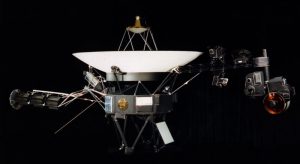
Figure 10: Voyager 1 Courtesy NASA/JPL-Caltech https://voyager.jpl.nasa.gov/galleries/images-of-voyager/
The exploration and study of the Oort Cloud and the materials that have originated from the Oort Cloud continues to be pursued by the astronomical community around the world. For instance, the European Space Agency has proposed a Comet Interceptor mission for launch in 2028 which aims to become the first spacecraft to get a close-up of a “dynamically new” comet or interstellar object that has not passed near the sun before.17 So far, spacecrafts have only visited comets that have made repeated passages close to the sun, where solar radiation breaks down ice and other material that are evidence from the birth of the solar system. The type of comets sought by this mission have originated in the Oort Cloud. Professor Colin Snodgrass, an astronomer at the University of Edinburgh and deputy lead of the Comet Interceptor science team, believes that the Large Synoptic Survey Telescope (LSST), currently under construction in Chile, will be critical in finding a comet destination.17 The new telescope is set to be operative by the end of 2022, and will be able to detect smaller asteroids and comets farther from the sun than ever before. With this development, “scientists expect to find comets with up to five or six years of warning before they reach perihelion, the closest point to the sun in their trajectories.”3 This forewarning will allow enough time to study the object, plot the trajectory, and reach it.
Conclusion
Further discoveries and concrete evidence to prove the existence of the Oort cloud would be revolutionary for the world of astronomical science. The theoretical nature that surrounds this mysterious region of our solar system, first identified by Dr. Jan Oort and defined as a collection of icy objects known as planetesimals, makes it a particularly attractive area of study.3 Using modern technology to identify objects that lie within the Oort cloud and gathering concrete evidence is the most promising method used by astronomers to finally prove the existence of the Oort cloud. The identification of long-period comets, protoplanetary discs, and dwarf planets are the main discoveries that the world of astronomy could use to prove this theory. The Oort cloud is a historical record of the beginning of our solar system and is a representation of how vast and wide our solar system is. The theoretical existence of the Oort cloud has the potential to unlock the mysteries not only of our own solar system but of the entire Galaxy.2
References
1Phys Org. Oort clouds around other stars should be visible in the cosmic microwave background. https://phys.org/news/2018-08-oort-clouds-stars-visible-cosmic.html (Accessed March 20, 2020).
2P.R. Weissman, Nature 344, 825 (1990).
3NASA. Oort Cloud. https://solarsystem.nasa.gov/solar-system/oort-cloud/overview/ (Accessed March 5, 2020).
4T. Dickinson, The Universe and Beyond, 4th ed. (Firefly Books, New York, 2004).
5A. Fraknoi, D. Morrison, and S.C. Wolf, Astronomy. Chap 13., Sec 4
6L.A. McFadden, P.R. Weissman, and T. V. Johnson, Encycl. Sol. Syst. 1707338 (2007).
7NASA. Oort Cloud. https://solarsystem.nasa.gov/solar-system/oort-cloud/in-depth/ (Accessed March 21, 2020).
8TIMELINE INDEX. Jan Oort, explorer Milky Way and Dark Matter. https://www.timelineindex.com/content/view/3901 (Accessed March 29, 2020).
9The Editors of Encyclopaedia Britannica. Jan Oort. https://www.britannica.com/biography/Jan-Oort (Accessed March 21, 2020).
10M.Williams, Universe Today. What is the Oort Cloud? https://phys.org/news/2015-08-oort-cloud.html (Accessed March 21, 2020).
11Rita Wysoczańska, Piotr A Dybczyński, Małgorzata Królikowska, First stars that could significantly perturb comet motion are finally found, Monthly Notices of the Royal Astronomical Society, Volume 491, Issue 2, January 2020, Pages 2119–2128, https://doi-org.cyber.usask.ca/10.1093/mnras/stz3127 (accessed March 20, 2020).
12T. èrése Encrenaz, Eur. Rev. 10, 171 (2002).
13THE PLANETS. Dwarf Planets: Interesting Facts about the Five Dwarf Planets. https://theplanets.org/dwarf-planets/ (Accessed March 21, 2020).
14N.A. Kaib, R. Roskar, and T. Quinn, Icarus. 215, 491 (2011).
15NEW TELESCOPIC WATCH. Top 6 Facts About Sedna, the Dwarf Planet. https://telescopicwatch.com/sedna-facts/ (Accessed March 29, 2020).
16Carnegie Institution for Science. Major new dwarf planet discovered.
https://astronomy.com/news/2014/03/major-new-dwarf-planet-discovered (Accessed March 1, 2020).
17SPACEFLIGHT NOW. European space mission to get close-up view of new comet. https://spaceflightnow.com/2019/06/21/european-space-mission-to-get-close-up-view-of-new-comet/ (Accessed March 29, 2020).